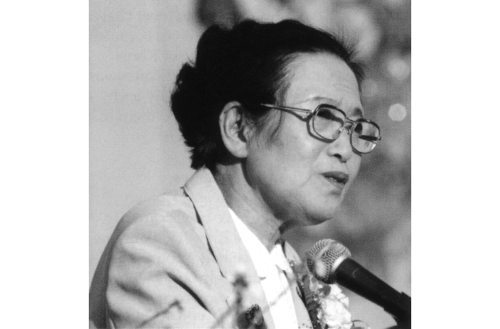Source Energy
God is the Absolute; the eternal I AM. (Exodus 3:14-15)
In other words, God is perpetual, self-generating energy. Therefore, He is the First Cause and the Source of all energy. This Source Energy consists of harmonized masculine and feminine energy within God.
The give and take between them forms the foundation for God's eternal existence. Source Energy operates throughout the creation and is the foundation of its existence and maintenance.
God's Energy appears through the medium of give and take, and causes all things to exist in give-and-take relationships. (Psalm 103)
Give and Take
All things or beings exist in paired relationships of subject and object. There is a pattern of transmission and receiving between the subject and the object whenever they find rapport through the operation of Source Energy.
This pattern is called the action of give and take. Give and take produce energy: the energy for existence, multiplication, and motion. When the action of give and take occurs, the subject and object become one.
This state of oneness reflects God's image and is a receptive base for the working of the spirit of God. God operates on the foundation of this reflected image or receptive base. When God works, energy is multiplied.
The Source Energy from God is vertical, while the energy produced through give and take between subject and object is horizontal. Thus, the Source Energy is manifested through the medium of give and take.
By forming receptive bases through the action of give and take, the whole creation continues its existence and maintains its motion.
Consequently, the receptive base is the foundation for everything that exists. There are no creatures that do not reflect the polarity of God. There is no creation in which God's energy does not work.
It is correct to say that God is omnipresent. When the energy of God goes forth in a straight line and does not come back, no creation is possible; the energy is wasted. But when God's energy comes back in a circuit through an object, the energy brings forth creation.
The creation of the universe, diverse natural phenomena, motion, and change in the creation are brought about by give and take between countless subject-object pairs.
A man and woman, who are the separate images of God's polarity, can form a perfect reciprocal relationship and to have give and take of love between them.
The purpose of marriage is to unite a man and a woman that they may fully reflect God as a unit and remain forever in a complete relation of give and take with God. (Gen. 2:22-24)
In this relationship, they form a trinity with God. In such a marriage, a husband and wife can feel the energy of life, stimulating joy, and happiness from one another. (Song of Solomon 2)
God desires to see the entire earth covered with such God-centered families. Tragically, the first human family was destroyed by the human Fall.
Rather than attaining oneness with God, our ancestors joined in a relationship with Satan.
Jesus was the only-begotten Son of God; he attained oneness with God through perfect give and take. When we unite with Jesus, we can recover our original God-given nature. Jesus is our mediator; he is our way, truth, and life. 81
Thesis-Division-Synthesis
Derived from God's harmonized polarity, all things are created in pairs so that they might form relationships of subject and object. Through give and take with their compliments, they are again united.
Through this union, they form a receptive base and produce new life. These three stages are called thesis (God), division (subject and object), and synthesis.' There are two forms of the thesis-division-synthesis process.
In the first, two unrelated units form a receptive base through give and take and become one unit, as in the case of a proton and an electron uniting to form an atom.
In the second, subject and object have give and take through which new life is produced, as in the case of sexual reproduction. The first synthesis is the united body, and the second is the reproduced body.
Triple Object Principle
In thesis-division-synthesis, when one position takes the subject role, the other three become its objects. Therefore, each member can have three objects. The best example is that of parents and children centered on God.
In that case, God can have each member of the couple as a separate object and children as His third object. The husband has God, a wife, and children. The wife has God, husband, and children, and the children, God, father, and mother.
Each being existing has a purpose for its creation, which is fulfilled through give and take. Therefore, in the thesis-division-synthesis process, each of the four separate members can fulfill its purpose of creation through give and take with the other three as objects. This is the "triple object principle."
Base of Four Positions
The thesis-division-synthesis process establishes four positions: thesis, subject, object, and synthesis. These four positions with God at the center form the basis on which the purpose of each being in creation is fulfilled.
This foundation is called the base of the four positions. Such a base formed on the family level with God is the foundation of society and the source and pattern of all other bases of the four positions.
It is God's ideal of creation because on this family base, people can experience the three basic expressions of love. As a child, our love is mostly passive as we receive love and care from our parents. In marriage, we experience mutual love.
As a parent, her love is expressed in giving rather than receiving. In the family base, every person must take the subject position and love three objects, as well as take the object position and return beauty to three subjects.
Loyalty, fidelity, and filial piety are the three forms of beauty that those in the object position return to the subject. Each thing in the universe can maintain its existence by forming a base of four positions, thereby generating power for life and all motion.
The number 4 (four positions) and the number 3 (three objects) equal 12 when multiplied, which bears great significance as the basic number of the laws and motion of all creation centered on humankind.
In diagram A, the base of four positions is shown as a four-cornered diamond. However, the actual base of four positions moves continuously as the action of give and take persists and multiplies, and thus the base becomes circular or spherical.
Let us explain this movement in the above diagrams. Diagram (A) shows the thesis- thesis-thesis-thesis-division-synthesis process and the four positions.
Diagram (B) shows the subject and object having give and take with God at the center and thus creating new life. That new life revolves in a give-and-take relationship with the united body of subject and object. Then give and take becomes spherical.
Since God has taken the central position, the fourth body (new life) finds another object in His former position and will have give and take with it. Thus, spherical movement develops.
Diagram (C) indicates God's position from the standpoint of the object. God is not between the subject and object, but is with the subject at the center. Therefore, the subject that is at the center of spherical movement represents God.
God created Adam to play the role of God's representative to Eve as her center. This couple, Adam and Eve, were to take the role of God's representative to the creation. Hence, mankind was to be the subject and the center of all things.
Everything in the universe, from atoms to heavenly bodies, revolves around the relationship of subject and object, thus forming a base of four positions. All the wonder of creation is manifested through this circular or spherical movement. (Ezek. 1:4-28)
The distance between subject and object, together with the differences in direction, speed, manner, and angle of revolution, creates the diversity of this beauty and wonder.
The spherical form of heavenly bodies and atoms results from the movement of the base of four positions within them. In each case, the object revolves around the subject. Therefore, the subject is not only the center of revolution, but is also in the position of governing the object.
Because it is the law of creation that subject rules object, God reigns over human begins (through love), and human beings reign over all things. In the natural world as well as in human life, there is always a center (subject), and all things are governed by the center through love. Thus, order is maintained. (Rev. 21) All creation has a center and revolves around it.
Not only does a subject have objects which revolve around it, but that subject itself becomes an object to a higher center and revolves around it. For instance, the moon revolves around the Earth, its subject, and in turn, the Earth becomes an object to the sun and revolves around it, the Earth's higher center.
Every single creation, from an atom to a heavenly body, revolves in this way. Throughout the creation, the lower centers revolve around the higher centers. The whole universe, therefore, forms a chain.
No single creation can exist independently. The entire universe is a hierarchy of centers, the highest of which is humankind.
If Adam and Eve had not fallen, they as a married couple would have been the center of the whole universe.



